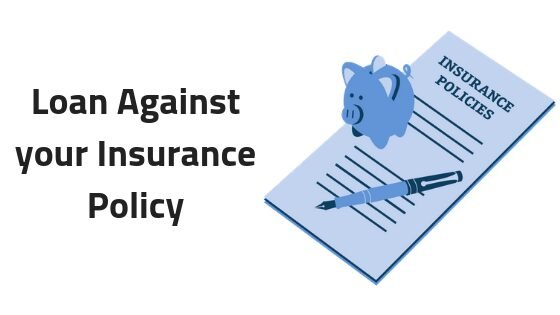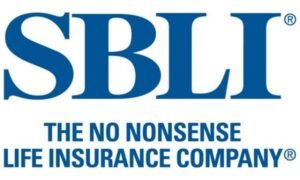
Borrow Against Life Insurance
In this comprehensive blog post, we explore the ins and outs of How to borrow against life insurance, covering topics like benefits, considerations, loan calculations, interest rates, and international perspectives. Find out how this financial strategy can be a beneficial tool in your financial arsenal.
When unexpected financial needs arise, many people look to alternative methods of obtaining loans. One option that is often overlooked is to borrow against life insurance policy. This approach allows policyholders to tap into the cash value accumulated within their life insurance policies to raise funds.
How To Borrow Against Life Insurance

If you are considering borrowing against your life insurance policy, it is important to understand the process and follow the necessary steps. Here is a general guide on how to borrow against life insurance:
- Check your life insurance policy: Determine the type of policy you have, whether it is whole life, universal life, or any other type with a cash value component. Cash value policies are generally eligible for loans.
- Check Policy Terms – Review your policy documents or contact your insurance company to understand the specific terms related to loans. This includes information about loan availability, loan limits, interest rates, payment options, and any associated costs.
- Evaluate Your Cash Value – Determine the cash value available in your life insurance policy. Cash value is the accumulated portion of your policy that can be borrowed against. It grows over time based on premiums paid and potential investment returns.
- Determine Loan Amount and Terms – Based on your cash value and policy terms, estimate the loan amount you want to borrow. Consider the purpose of the loan and make sure it aligns with your financial goals. Evaluate payment terms, including interest rates and payment schedule options.
- Complete the loan application: Contact your insurance company or go to their online portal to begin the loan application process. Complete the necessary forms and provide accurate information about the amount of the loan, the purpose, and the desired terms.
- Submit Required Documentation: Along with the loan application, you may be asked to provide additional documentation such as proof of identification, policy details, and a loan agreement. Follow the instructions of your insurance company and submit the required documentation.
- Wait for approval and payment: Once your loan application is submitted, the insurance company will review it and determine if you meet the eligibility criteria. If approved, you will disburse the loan according to the agreed terms. This can be done by direct deposit, check, or other methods specified by the insurer.
- Pay off the loan: Set up a payment plan and stick to it. Understand the payment options available to you, such as periodic payments, interest-only payments, or using the policy’s cash value to pay off the loan. Make payments on time to avoid potential penalties or negative consequences.
- Monitor the impact on your policy: Understand that to borrow against life insurance policy reduces the death benefit and can affect cash value growth. Stay informed about the status of your policy, including your outstanding loan balance and accrued interest.
Is It Beneficial To Borrow Against Life Insurance Policy?
- Understanding the Cash Value Component – Exploring how permanent life insurance policies, such as life insurance or universal life insurance, build cash value over time.
- Benefits of loans against life insurance: Highlight the convenience of quick access to funds, potentially lower interest rates, and flexible payment options.
- Disadvantages and Risks: Discuss potential disadvantages, including reduced death benefits, potential tax consequences, and the importance of loan repayments.
The Loan Process and Considerations
- Suitability and Timeliness: Addressing when policyholders can start borrowing against their life insurance policies and the factors that affect loan availability.
- Loan Limits: Explain how the loan amount is determined based on the policy’s cash value, outstanding loan balance, and the terms of the policy.
- Payment Options – Detail the different methods of loan payment, including regular payments, interest-only payments, or using the policy’s cash value.
- Impact on Death Benefit: Clarification of the impact of loans against a policy and the possible reduction in the death benefit.
Exploring Loan Terminology vs. Life Insurance
- Understanding policy loans: define the term and explain how it is different from traditional loans.
- Distinguishing Universal Whole Life Insurance from Term Life Insurance: Highlight the distinction in loan options and features.
- Loan Rate – Analysis of factors that affect interest rates, such as insurance company policies, policyholder creditworthiness, and prevailing market conditions.
- Sanctions for loan repayment: explanation of the possible consequences of non-repayment of the loan and the effects on the policy.
Advantages And Disadvantages To Borrow Against Life Insurance
To borrow against life insurance policy can have certain advantages and disadvantages. It is essential to consider these factors before making a decision. Let’s look at the pros and cons of borrowing against life insurance:

Advantages:
- Accessibility of Funds: Borrow against life insurance policy provide quick access to funds without extensive paperwork or credit checks. The process is usually simpler and more comfortable compared to traditional loans.
- Potentially lower interest rates – Life insurance loans often have lower interest rates compared to other types of loans, such as personal loans or credit cards. This can lead to cost savings in the long run.
- Payment Flexibility: Policyholders often have flexible payment options when they borrow against their life insurance policies. They can choose regular payments, interest-only payments, or use the policy’s cash value to pay off the loan, allowing them to accommodate their financial situation.
- No credit impact: Because life insurance loans are backed by the policy’s cash value, they typically have any impact on a borrower’s credit score. This can be beneficial for people who are concerned about their creditworthiness.
- Potential tax benefits: The proceeds of a life insurance loan are generally not subject to income tax. Borrowers can access the funds without incurring an immediate tax liability, unlike other forms of lending.
Cons:
- Death Benefit Reduction – When borrowing against a life insurance policy, the amount borrowed, plus accrued interest, is deducted from the policy’s death benefit. This means that beneficiaries can receive a reduced payment upon the death of the policyholder.
- Potential Tax Consequences of Policy Assignment: If a policy is assigned or canceled with an outstanding loan balance, the borrower may be subject to tax on the accumulated cash value in excess of the premiums paid. This can lead to unexpected tax liabilities.
- Policy Forfeiture Risk: Failure to pay the loan or interest charges within the terms of the policy may result in the forfeiture or termination of the policy. This can lead to loss of coverage and possible financial consequences.
- Impact on cash value growth: Loans against a life insurance policy can delay cash value buildup. Since the amount borrowed reduces the available cash value, it may take longer for the policy to grow in value or reach its intended goals.
- Limited Borrowing Capacity – The amount you can borrow against your policy is generally limited by the available cash value and the terms of the policy. If you need a substantial loan, it may not be feasible to get the amount you want from your life insurance policy alone.
Conclusion
To borrow against life insurance policy can be a valuable financial tool if used correctly. In this blog post, we explore the benefits, considerations, interest rates, and international perspectives of this strategy. Gaining a comprehensive understanding of these aspects will help people make informed decisions regarding their financial needs. The convenience of quick access to funds and potentially lower interest rates to borrow against life insurance policy is an attractive option. However, it is crucial to carefully weigh the possible drawbacks. The reduction in the death benefit, potential tax implications, and the importance of loan repayment should be carefully considered before proceeding.








